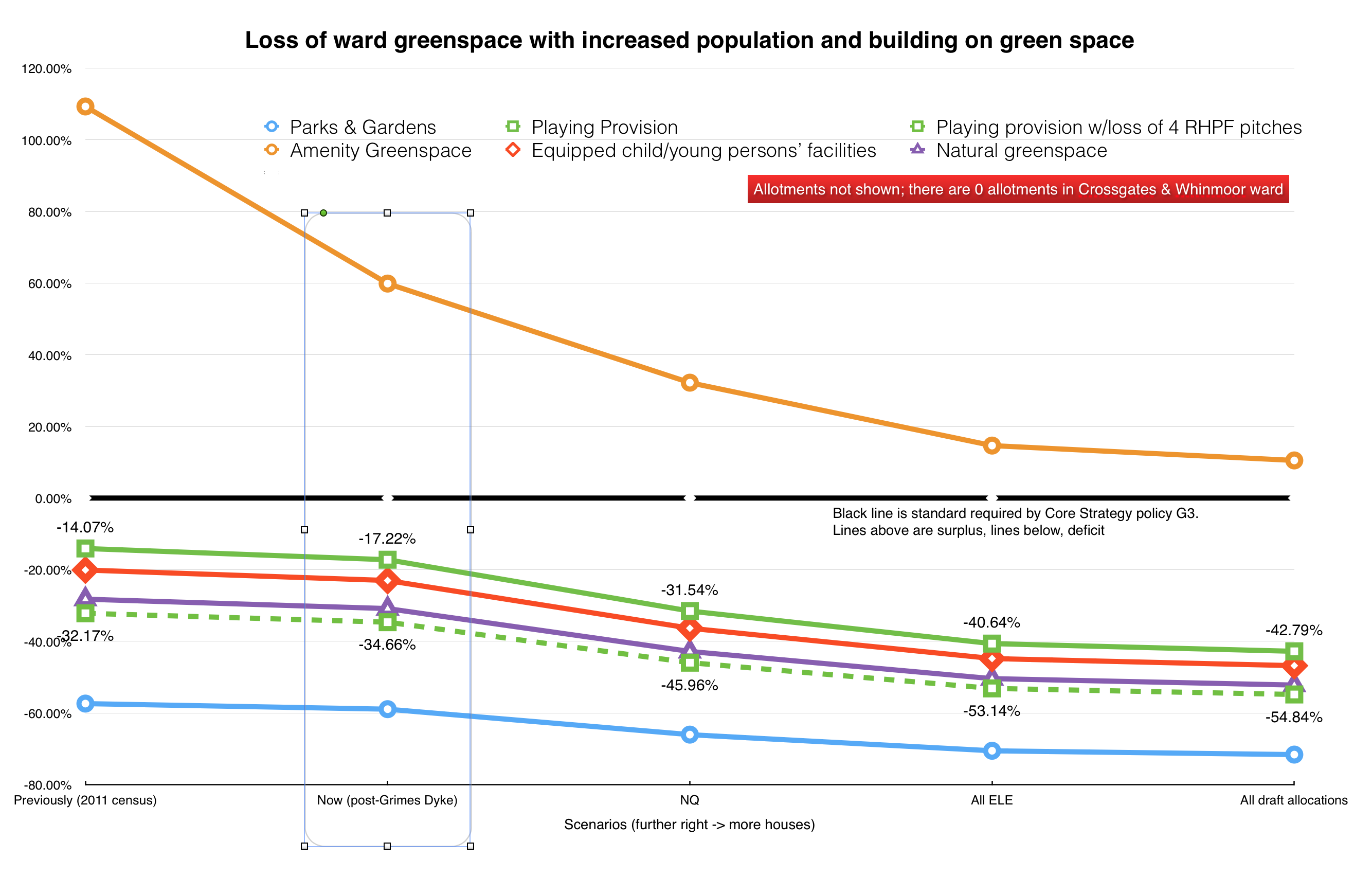When we met Councillor Gruen in August recently, we said we would post a more detailed analysis on the effect of house-building on our ward’s green space deficit.
As we’ve previously said when we took our deputation to council, Crossgates and Whinmoor ward is deficient in five out of six typologies of green space. Working from a 2011 document1 detailing green space provision for each ward in Leeds, we estimate the effect on greenspace provision due to population growth in the following scenarios:
- Baseline – when the provision document was produced
- Now – after Grimes Dyke (previously recorded as amenity space) was built out
- Northern Quadrant – after the Northern Quadrant allocation east of the A58 has been built out
- ELE – after the whole East Leeds Extension is built out
- All allocations – after all draft allocations in the ward are built out
The results2 show the following decline (with the exception of allotments, because our ward has none):
There are two green lines for playing provision – the upper (solid) green line is the decline without the loss of four playing fields. The lower (dotted) green line is with the loss of all but 2 of the space for the 6 fields the land currently has, based on the council’s assertion that “at least two playing pitches will be retained”.
The quantity of playing provision in this ward is currently ~17% below what Core Strategy Policy G33 calls for. If we lose 4 playing pitches and all current draft allocations are built out, we’ll be ~55% lower than the level of provision G3 calls for.
Residents themselves don’t necessarily always need playing provision exactly – we just need versatile spaces to exercise, relax, and manage our general health. This deficit in itself would not be so bad, but we are already ~60% in deficit for parks and gardens (dropping to ~70% after building). In turn, this too wouldn’t be so bad, given that the ward currently enjoys a ~60% surplus in amenity green space (dropping to ~20% after building), but sadly none of that space is walkably close to the residents the fields serve. These fields serve triple duty: amenity greenspace, playing provision, and parks and gardens.
Assumptions used in the production of this document can be found on the last page of the results.
